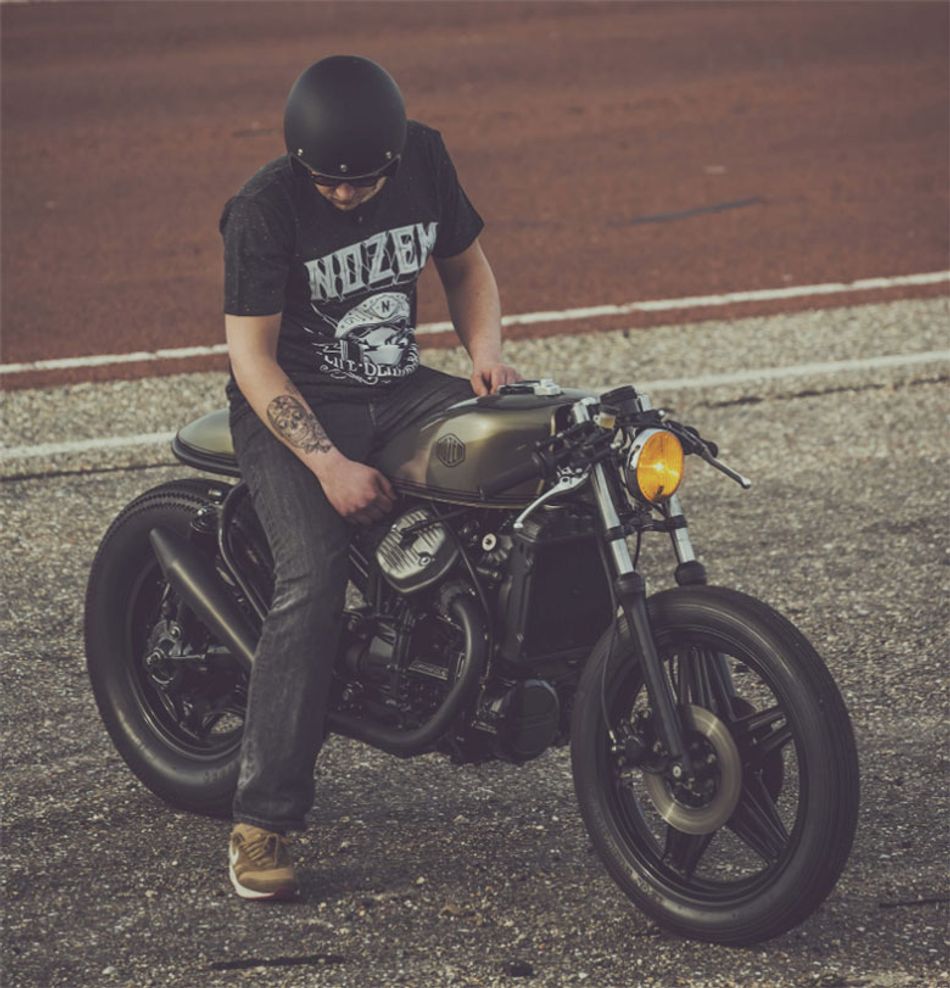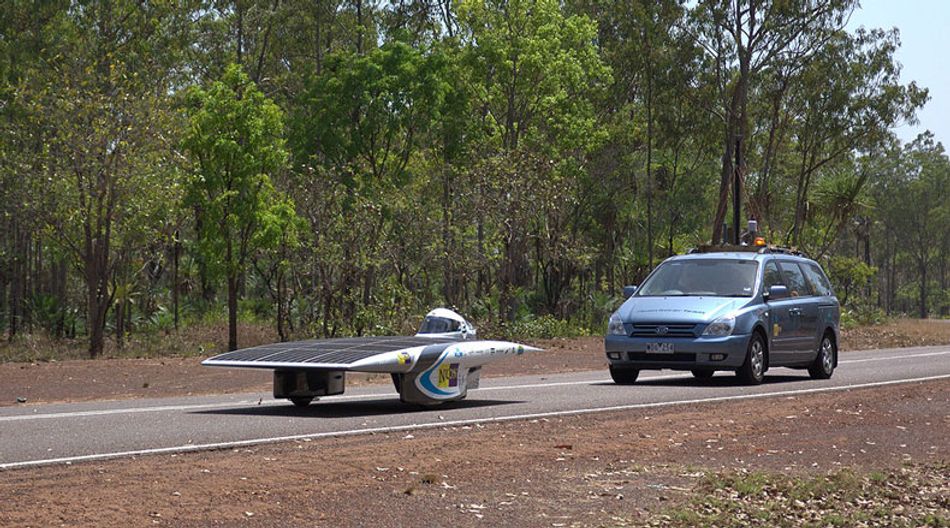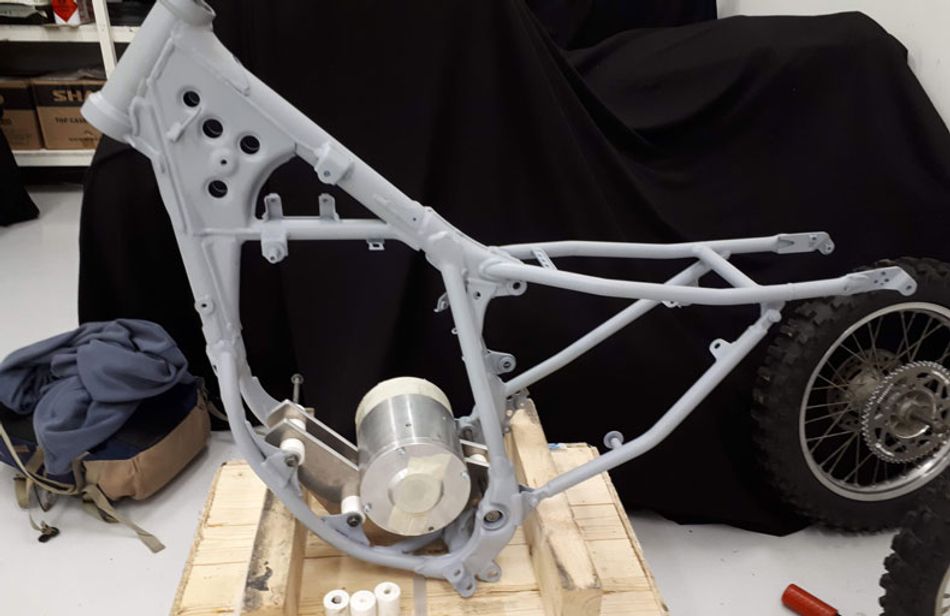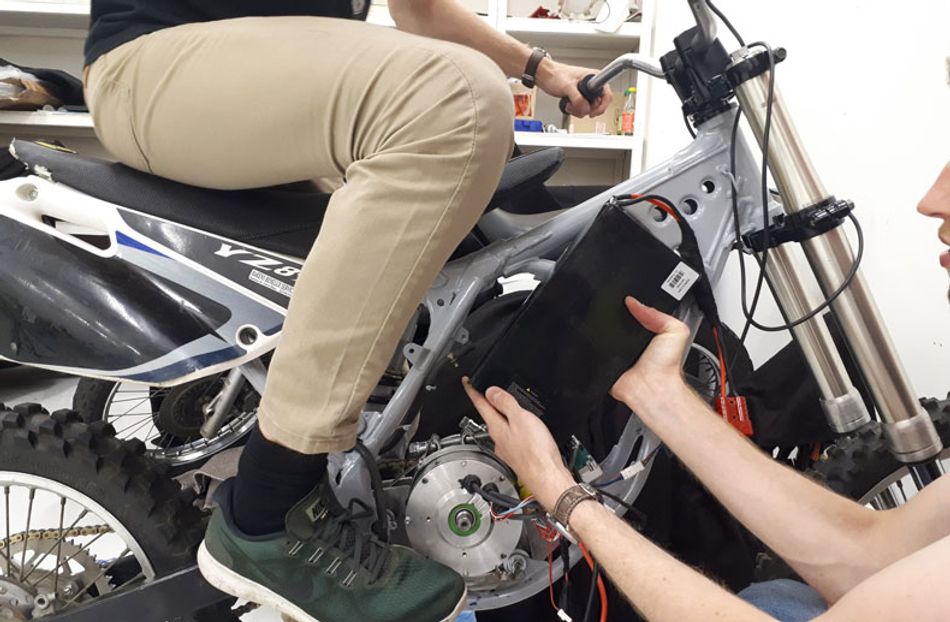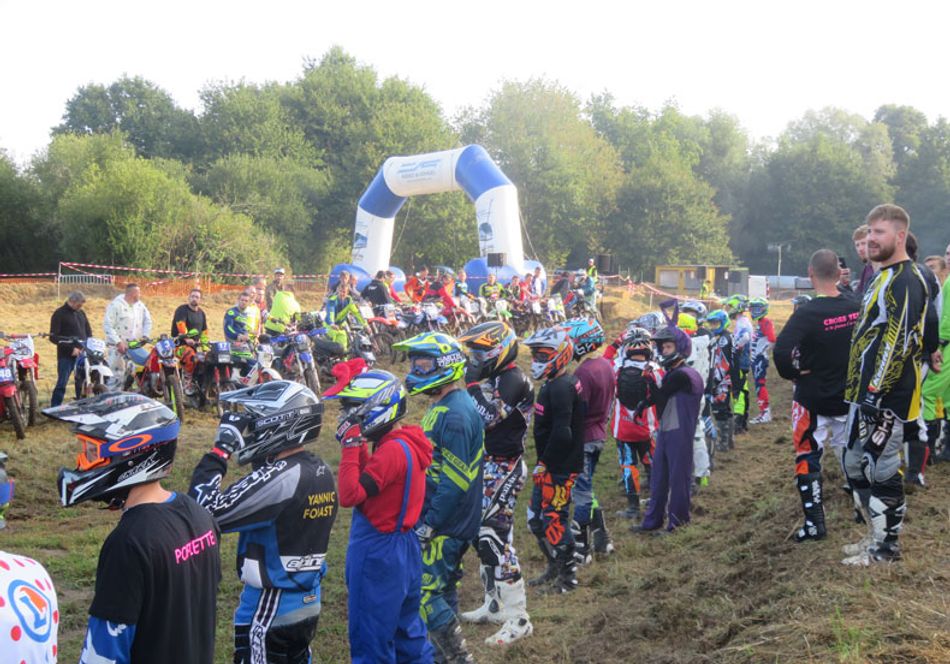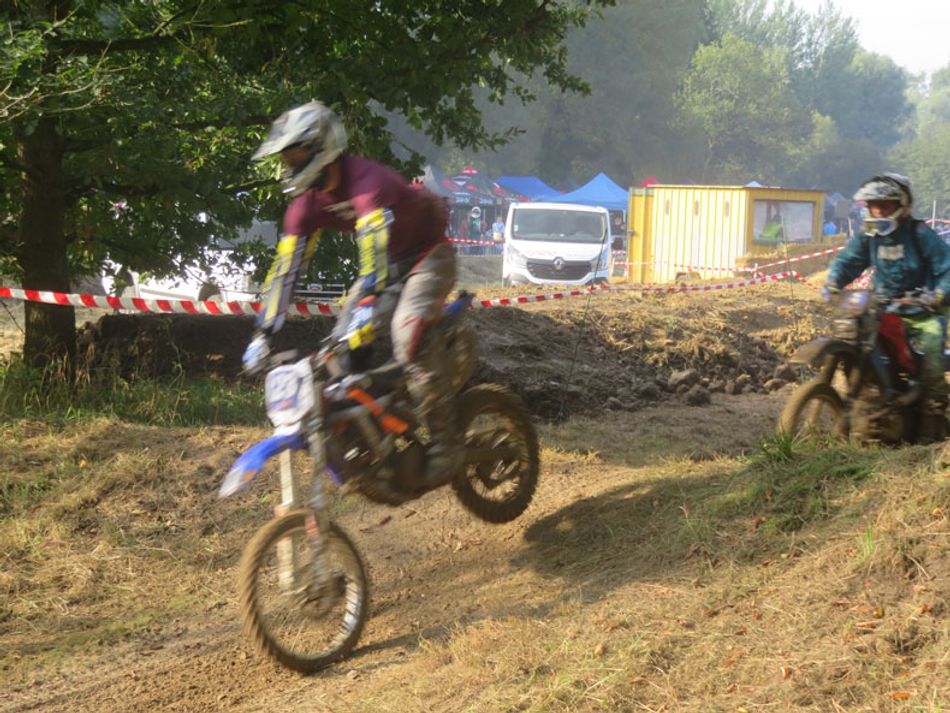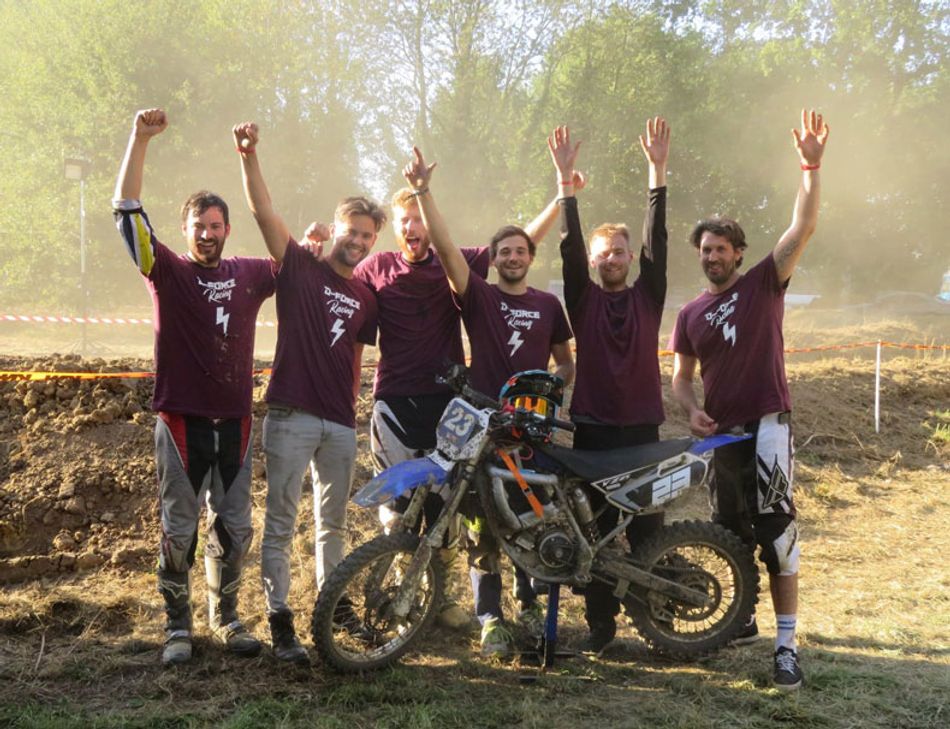The challenge: Build and race an electric motocross bike in 2 months
Can 6 friends beat the competition's gasoline motorbikes in a 10-hour endurance race?

The custom-built electric motocross bike
Les 10 heure Mob is a grueling 10-hour endurance race on a motocross track in Laon Northern France. After racing in the competition for the past 10 years, Francois Dagry, an experienced mechanical engineer and motocross enthusiast, decided it was time to shake things up by challenging the classic petrol bikes with electric.

While electric cars are already competing against their petrol counterparts with the backing of innovative companies like Tesla, two-wheelers have now followed reaching the brink of a massive transformation. With the global market for two-wheelers projected to reach $125 billion by 2024.
But, aside from environmental factors, can electric vehicles actually compete when it comes down to endurance, speed, and performance?
Not only was this a personal challenge for Francois, his brothers had also entered the race with their own petrol motorbike, adding a tinge of bragging rights to the prospect of winning.
To pull it off, he recruited five engineers who were passionate enough to give up their evenings and weekends to build their own electric motorbike.
The crew
Daniel Marchant had been doing motocross as a hobby for 16 years. Along with some friends, he had started his own workshop, Nozem, where he designs and builds sick custom motorcycles with classic styling and unparalleled performance. He’s built over 50 odd motorcycles in his young life already. This was the first electric motorbike he’d ever built. When asked why he joined the competition, the answer was a no brainer: “Because I love motocross.”
Jochen Nooren, better known as ‘Sushi’, couldn’t pass up the chance to compete. A passion for speed and motorbikes is what triggered him to join. “It was new to me, everything came together. We could use the skills that we’ve developed to kind of do our hobby, which for me is racing bikes.” But as a self-professed petrolhead, could Jochen be converted to electric motorbikes?
For Joris Koudijs, this challenge brought him back to his University years. For five years he had been part of a student team that was building competitive motorcycles. But this time he’d also be riding the bike in a motocross race for the first time. When asked why he signed up, he said, “It seemed feasible. We had the right people. And... who wouldn't enjoy building and racing their own bike?”
Adri Aarnoudse, not a stranger to unusual challenges, had once built a solar-powered car with a student team and drove it across Australia. Not only would building an electric motocross bike be a new challenge, he’d also never ridden one before. “It was insane. Building your own bike, driving to France and entering in a race.”
Then there was Jack Davies. As his teammates described him: “Jack is just the craziest. He built his own CNC machine and his own electric bike and other things, all as side projects.” Like Adri, he’d never ridden a motocross bike but decided a 10-hour endurance race might be a good place to try it out.
How to build an electric motorbike on a budget
The first challenge they faced was actually building the bike. This time around they didn't want to spend too much so they did the entire thing, including travel and actually building the bike, on a total budget of 1500 euros.
This meant they had to get creative, “The performance of the bike was pretty much determined by whatever we had on hand and whatever we were able to make,” Joris explained.
They started the build with a YAMAHA 80yz 2001 rolling frame, but they would have to adapt all of the electronics (motor, motor controller, and batteries) to fit the bike. “We built the electronics by putting together scrap parts. So we did a lot of recycling!” Francois said.
Specifications of the Electric Motorbike
Electric motor:
- Rated 5kW continuous power (this was the limit given by the race rules).
- Embedded magnet for more reliability.
They started with a typical mid-drive electric motor. The aluminum motor casing was simple and circular, so it was easy to integrate in the bike, they just had to make a few necessary modifications to make it fit. The guys also made a laser cut aluminum plate to mount it.
Electric motor controller:
- Silixcon SC1040 capable of 175A continuous and 250A peak.
The motor controller they used was very small and easy to integrate. “We made a nice heat sink to help with cooling and added extra potting to make it water-resistant. We also made a nice casing to mount the encoder on the motor,” Francois said. This part measures the angular position of the rotor, which is then sent to the motor controller.
Building a high performance 36 volt battery:
- 36V batteries (10s14p) with 18650 size cells.
- 2 batteries in series, so 72V nominal.
For Jack, it was a cool opportunity to test out new skills. “We built a higher power battery pack from scratch. We had a box of 700 lithium cells so I spot welded them together and built the battery.”
By adjusting the layout, voltage, and current, he was able to build a high-performance battery that could power them through the race.
This setup also made battery swaps during the race quick and easy.
A Custom-made Baby
The team also made a lot of custom parts using a CNC machine, lathe, and 3D printer. Before joining the team, Jack had built his own CNC machine. “We had it in our apartment next to our bed for a while but my girlfriend didn't really like that very much.” It finally found a home in their workshop.
Thanks to this unexpected donation, Sushi was able to design and build a custom sprocket for the motorbike. By making it larger (66 teeth) than their original sprocket, it would give them even more torque, while generating less heat.
“It took some iterations before we got it right. Luckily we didn't invest any money in building the actual sprocket before we had a proper design. Instead, we 3D printed prototypes. I think it took like three, four, maybe five iterations before we got it to work.”
They also had the engine temperature displayed on the handlebar to make sure they weren’t going over the limit.
Along with these modifications, the rear brake foot pedal was replaced by a hand brake (LHS). Since they didn't need a clutch, it was possible to use this spot for the rear brake. They also completely rebuilt the suspensions before the race.
The final result
It took them about 2 months in total to build the bike, but only 2 weeks of intense work.
“We only tested the bike one time,” Adri admitted. “What we were afraid of most was the temperature and the overheating of the motor. So we did some modifications to prevent that which, in the end, was really needed.”
They planned to be on the road to France by six the night before the race. But when seven o clock rolled around they were still building the battery and working on the brakes.
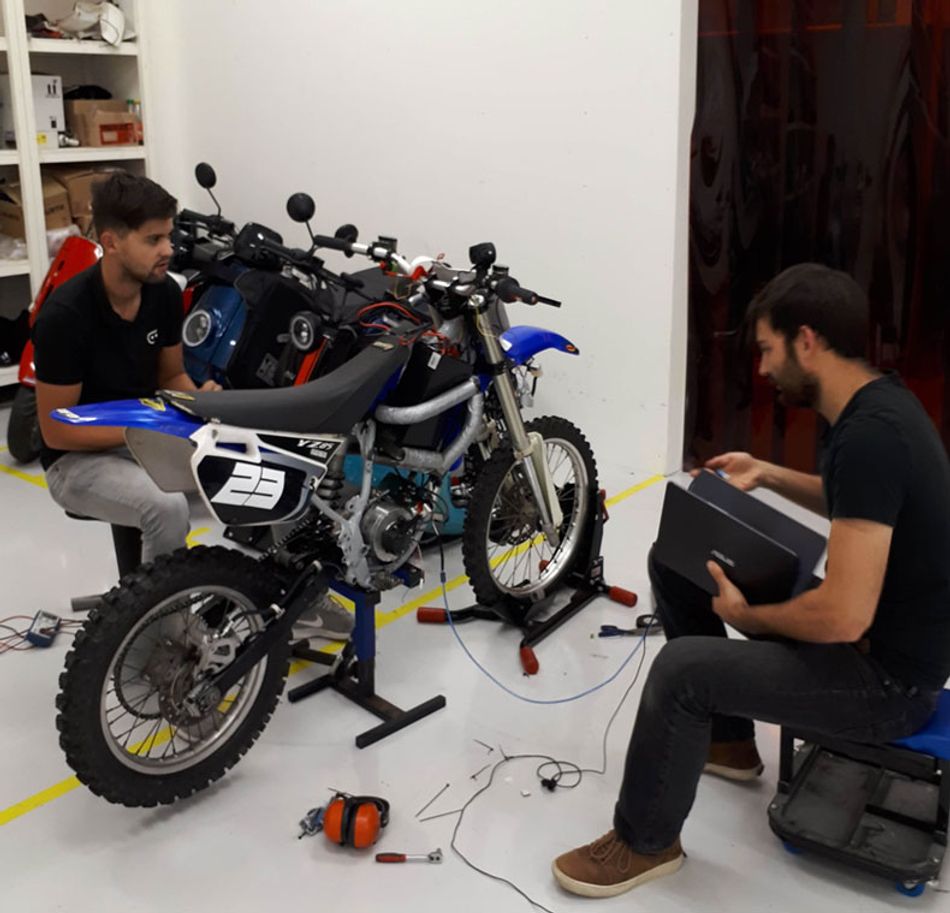
Having had little time to test out the bike beforehand, the pressure was high the day of the race. To add even more fuel to the fire, Francois’ brothers were sharing the same tent. “His brothers had their own petrol motorbike and they really wanted to win,” Adri explained.
People were going in and out of the tents inspecting the bikes, borrowing tools, and shouting some friendly banter at each other. The guys’ electric bike was like its own sideshow.
“It was completely different from everyone else’s motorbikes at the racetrack,” Sushi said. “People were really flabbergasted like they would walk past the bike and at first think, ‘okay, normal bike and then… wait a minute, that's not a normal bike!’ Then they’d come have a look. Everyone was really impressed and really supported us.”
The challenges of racing a custom-built electric motocross bike in an endurance race.
Then the bike hit the first snag... “The chain came off in the first lap and it messed up the rear sprocket which we only had one of,” Daniel explained, “This changed the ratio of the motor.”
Slightly disappointed, Sushi said, “When it (the sprocket) worked, it worked really well and it looked really cool but then I think after like three laps of racing it got completely destroyed. Luckily we had our old one with us.”
The competition heated up..
The sunny day hardened much of the mud into dirt, making the track easier to navigate… at the same time, it wasn’t all smooth riding for our team and the motorbike.
Jack was not a fan, “It was a super hot day. You were in all the gear and helmet and boots and everything so it was boiling because you had to use a lot of energy to maneuver around as well.”
This wasn’t as bad as what the weather conditions did to the bike.
“The bike has a sensor to know which way it’s turning. We 3D printed the holder for it but it warped due to the heat. Then we had to drive in sensorless mode so sometimes the engine wouldn’t know which way to turn. The sprocket issues exacerbated this,” Daniel explained.
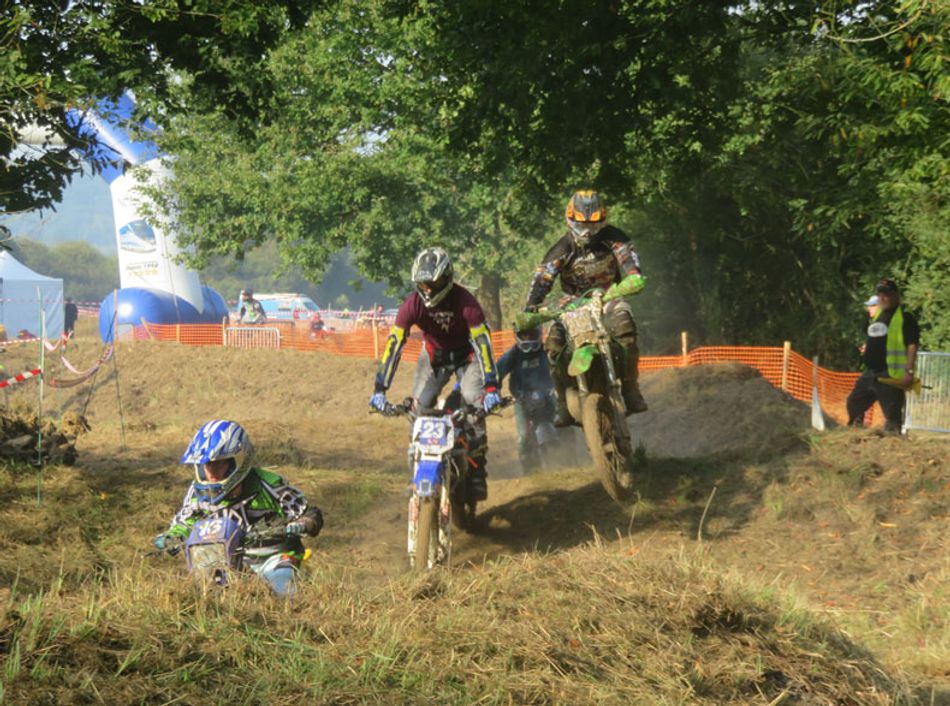
Jack came face to face with this problem during his very first lap. “At every turn, it would go into senseless mode and he would have to run it. After that he passed out for the next 45 min before he could ‘arise’ again and go out for another lap,” Daniel said laughing.
In the end, Joris made some magic adjustments in the throttle behavior and that did the trick, so the rest was just fun… and then the chargers died.
The electricity thief
In the last hour of the race, someone came in with dead batteries. The guys quickly changed them out and sent the next racer on his way. But when the batteries died again two or three laps later… That’s when they figured out they had a problem...
“Apparently someone had unplugged our power cord. We had one cord running from the generator to our tent and halfway in between there was a connection and someone unplugged it and used it for himself. So we thought our batteries had been charging for 2 hours but they hadn’t at all,” Sushi said.
They had two chargers, one that would take six or seven hours to fully charge the battery and one that would charge in 45 minutes. They tried to get the fast one to work but it died. So, in the end, they put two batteries on the slow charger for the last hour and a half.
They tried everything they could to get the chargers to work. In the end, they put the partially charged batteries in 15 minutes before the end so that motocross newbie Jack could finish the race.
“The last few laps I was overtaking everyone because they were all super tired by that point and I was really fresh. So the last 10 laps I overtook like 20 people.”
After the race
“We were not close enough to imagine how demanding the race conditions would be for the bike. During a race, you really push the bike to the extreme, full throttle for 10 hours! You crash, you jump, and you never stop! Even if we focused on optimizing the thermals of the motor, it was not sufficient. But, now we have a reference to improve the bike for the next race,” Francois said.
Even if they didn’t win, he could live with the sweet consolation prize of beating his brothers. In the end, their motorbike broke down halfway through the race so Francois’ team ended the race with more laps under their belt.
However, they did face some issues with the motor overheating. “That was due to running the small sprocket, otherwise you get way more torque at lower rpm, generating less heat. We learned a lot of things which we can improve on, especially getting the right settings on the batteries so they last longer and we could do more to improve the heat dissipation,” Daniel said.
They also didn’t have time to add features like regenerative braking, which could help to prolong the battery during next year’s race.
Taking home a prize
In the end, they didn’t win, but they did get a special commendation for racing an electric bike.
“They really liked our bike so they created a special prize for us for innovating and bringing awareness. They were extremely supportive,” Joris said, “they must have come up with that prize during the race... I guess they did have ten hours to prepare.”
They even converted some of the event-goers. “A lot of people came to us after the race to ask technical questions about the bike. It was something completely different from the others. But it was a bit double. There were also people saying it doesn’t smell or make noise and stuff like that. Francois’ brothers were saying that as well but, when they drove it, they were smiling a lot because it has so much power,” Adri said.
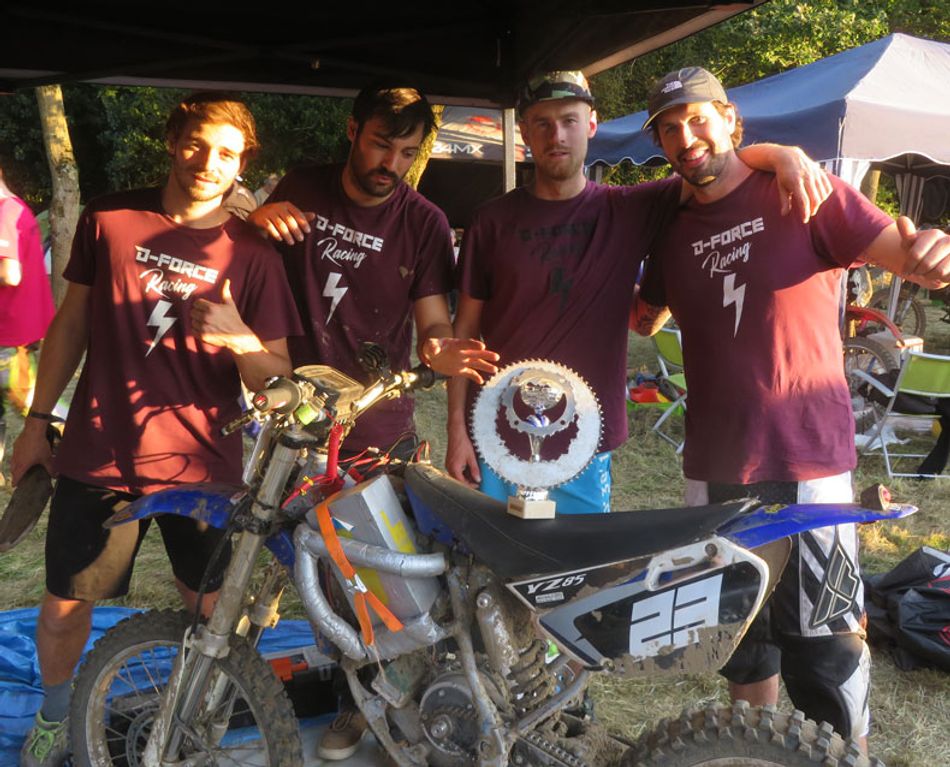
Part 3: The benefits of EVs on the racetrack
So the crowd and the race organizers were impressed. But what did our team of riders think about the performance of the electric motorbike? What were the main advantages when compared to riding a typical combustion engine based bike?
Benefit #1: EVs have instant torque meaning more rapid acceleration
For motocross veteran Daniel, the difference was a way smoother ride, “The bike handles so differently from a petrol engine. With a petrol engine, you have gears and low torque and high speed. On electric it's just instant torque and super smooth throttle, the bike does exactly what you want.
“With a combustion engine, the quicker your engine revs up and down and being in the right gear are what allows you to handle the bike exactly the way you want. Because if you’re in the wrong gear and you throttle it and you try to corner but you don’t have any speed, the bike will want to fall inside. With electric, it’s just throttle, throttle, brake, slide, slide. It’s great, I loved it.”
Benefit #2: Electric vehicles are lower maintenance
When you need every second you can get, cutting down on pit stops can make a massive difference.
“During a 10H race you do have a lot of maintenance on a petrol bike: You need to change spark plugs, clean the carburetor and air filter quite often,” Francois explained.
By the same token, lowering the amount of wear and tear being taken out on your bike can give you a competitive advantage, “For this race, it was very, very much an advantage over other bikes because, for petrol bikes, it's really hard to keep the engine running for 10 hours at maximum throttle. That's really heavy on an engine and, in fact, a lot of engines broke down and people had to switch them halfway during the race. Meanwhile, we just kept going.”
Benefit #3: Electric motors are quiet: The sound of silence
For Francois, this was definitely an advantage: “Electric is much more comfortable to ride because it’s quiet, especially when you do an endurance race and stay a long time on the bike.”
Joris agreed, “in dirt bike racing, I think people are more prone to accept the lack of noise because dirt bike riding is something you do in nature, or on trails so being very noisy isn’t really a good thing. And, with road racing, people are waiting for the motorcycle to come around from a lap. They want to hear it coming and that's part of the excitement I guess.”
For Adri, it isn’t just about the mechanics, it’s also about changing mindsets and behaviors, “It’s just something people aren’t used to yet. I think it can change. If you have an all-electric competition, then people won’t expect a lot of noise.”
“I was talking once with an EV industry expert about the need to add drive sounds to electric vehicles. He was saying that he went to China a few times and in all the big cities a lot of people are already driving electric scooters because the government wants to promote them for better air quality. Because people are used to silent vehicles already, they always look left and right before they cross the street, even if they don't hear anything. So the behavior of people can change.”
Converting the team’s petrol head
For Sushi, it was all about getting that adrenaline rush, “the most fun part was actually racing the bike. We were with six drivers. But I think me and Daniel did more than half of all the racing, which I didn't mind.”
“I think, especially with people who race, it’s difficult to convince them of electric bikes. Because most people are really petrolheads. Like even myself.”
“It’s the feel of the bike vibrating, it's the noise. Especially the race bike that I have, when you're all the way up in the refs it's really screaming… It’s kind of difficult to explain.”
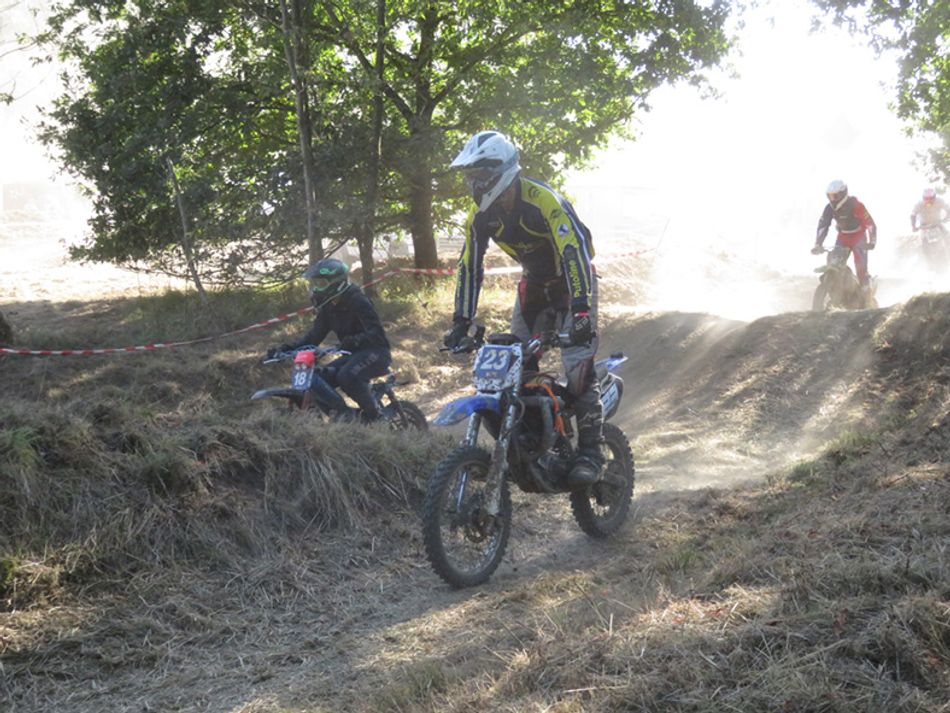
“Maybe it's because I grew up with it. Maybe kids who grow up now will be more interested in electric vehicles.”
“It’s really different. The way the engine responds in the throttle is completely different from a combustion engine. And also, the weird thing is, it's completely quiet. I guess what you have on a racing bike is that you hear the engine roaring. Meanwhile, this is just like floating on air.
“That was also one of the things that other people told us during the race. They said, ‘the only thing that annoyed me about you guys is that we couldn't hear you.’ When you’re racing and someone's quicker than you and coming from behind, you’ll normally hear them coming. So we kind of surprised everyone when we overtook them.”
Will electric motocross racing be the future?
“Definitely. I mean, that's the case with anything I guess. If someone has a start and invests time and energy into it, and if it works, people will follow along, and then it will develop and develop at some point. People just have to start doing it and it’ll become more and more normal to have an electric vehicle, now it’s just cars mainly, scooters are obviously coming, and race bikes will definitely follow,” Sushi said.
Daniel full-heartedly agreed, “Oh yeah, definitely, it’s the way to go. It’s the future. Also for motocross. I mean Alta Motors has already proven that by beating all the big brands.”
“I think in electric two-wheelers, dirt bikes were the first to really show competitive potential. The bike Alta came out with was super competitive and people were really in favor. KTM is a very quick bike as well,” Joris added.
Are you going to build a new bike and race again next year?
For Francois, who had practically grown up at the track, there was no need to think about it twice. “We will be there next year! We’re already improving the bike, and we are planning to train on motocross tracks. We would also like to register the bike for a flat track race soon!”
Sushi laughed, “Even a week after the race I was still limping around. My muscles were so sore that I had to go down my stairs at home in reverse because I couldn't walk. You don't notice it when you're driving because you're full of adrenaline. Every time I got up to go to the bathroom or to get coffee people were laughing. But I would do it again tomorrow. Even with the same muscle ache.”
We may have one of the few electric dirt bikes on the track, but it won’t be the last. Change and new innovations are coming every day and next year, we’ll be ready.

